Long-Term Oil Port Performance - Eight Years
Background
My first Shimano hub gear only lasted two years before failing catastrophically, in October 2008. Dismantling it after failure it was evident that it had let water inside and there was lots of corrosion. It's not a pretty sight, but the full detail (and nasty pictures) is listed on another page.
Modifications
Recalling that good old Sturmey-Archer hub gears work forever, withstanding any abuse as long as they get an occasional dose of oil through the hole in the shell, I decided to see if I can put an oil port on my new hub.
Longer Term Performance
When the hub was nearly two years old (almost the age when the first hub expired), and had had a year unmodified and a year with an oil port, I opened it up to see how it was doing. That is reported on the one-year-later page.
Now the hub is eight years old, having done 50 to 60 miles a week, year-round so probably something like 20,000 miles. Despite an intention to top up the oil every month, it has probably sometimes gone a year without top ups, but I've put some oil in occasionally.
The hub has been making some ominous noises recently, so it seems like a good time to have another look inside...
Left side cone off and the bearings look good.
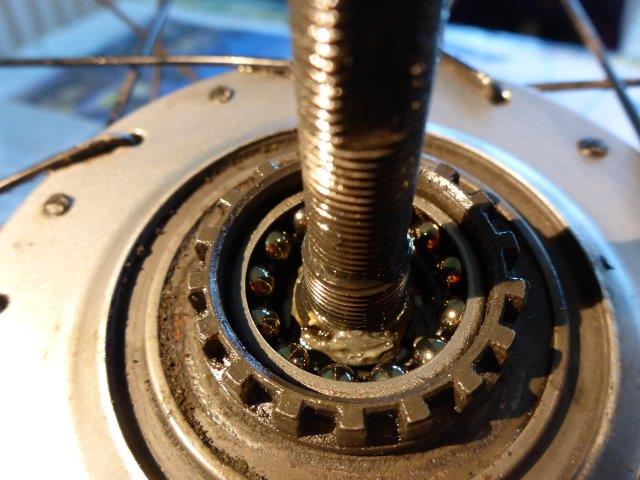
Cone looks good.
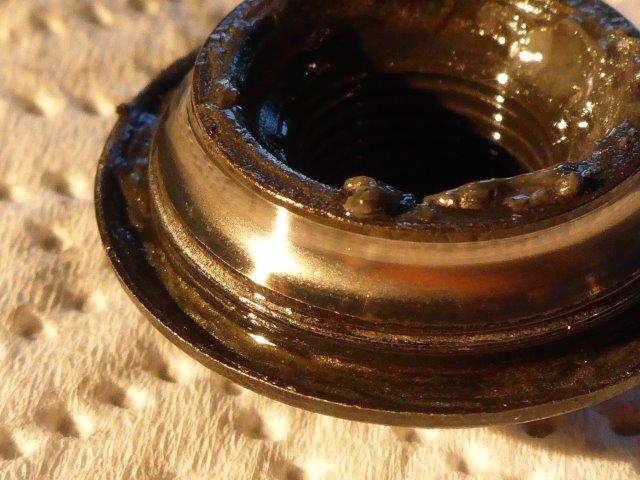
Left side cup looks good too.
I pay attention to the left side bearings because they are furthest from where oil will settle in the hub shell, and also because the bearings on this side of the hub look less reliable to me. There's a rubber ring on the back of the roller brake, but I'm not at all convinced it makes proper contact with the hub shell. Clearly, however, it works well enough (at least, if you keep the hub oily).
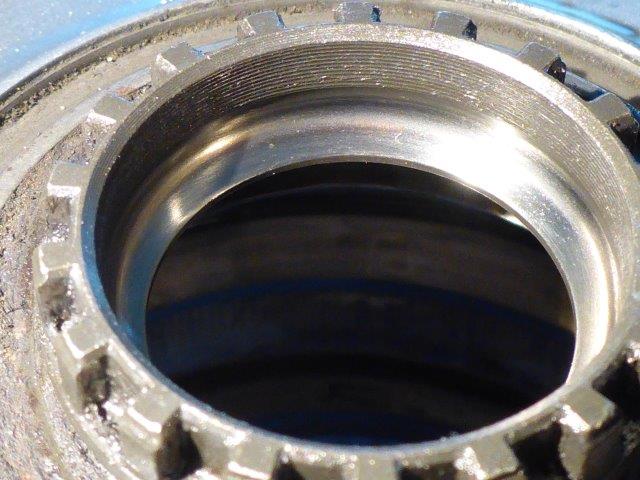
I drained the oil for about 24 hours before opening the hub so all this wetness demonstrates how tenacious the oil is.
Lots of oil throughout. It is rusty-coloured but there's no obvious sign of rust on any important surfaces.
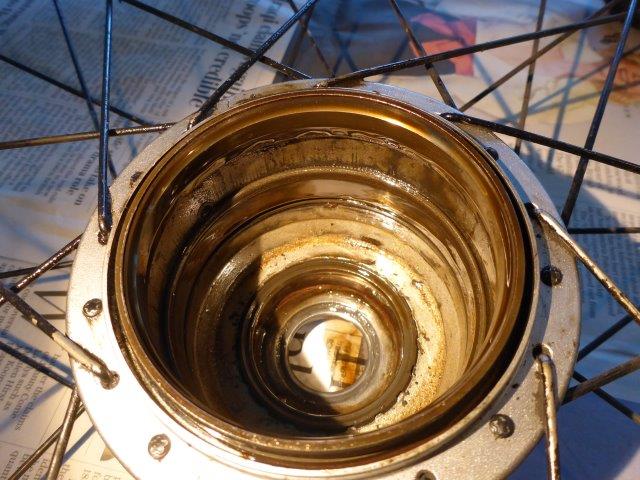
After wiping out the oil from the hub shell, still no sign of any significant corrosion.
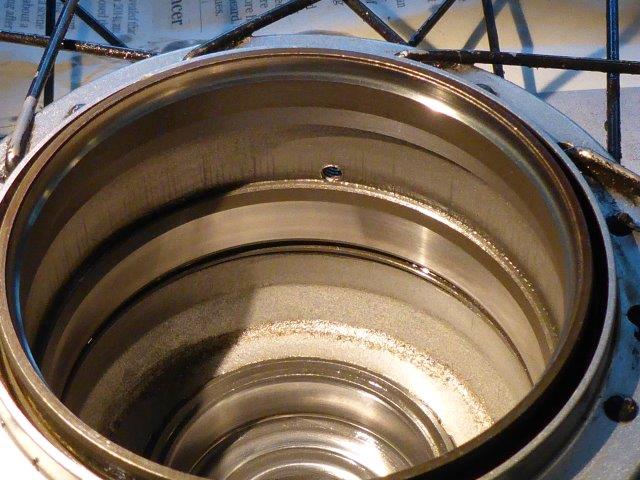
Close look at the bearing surfaces shows everything in good condition.
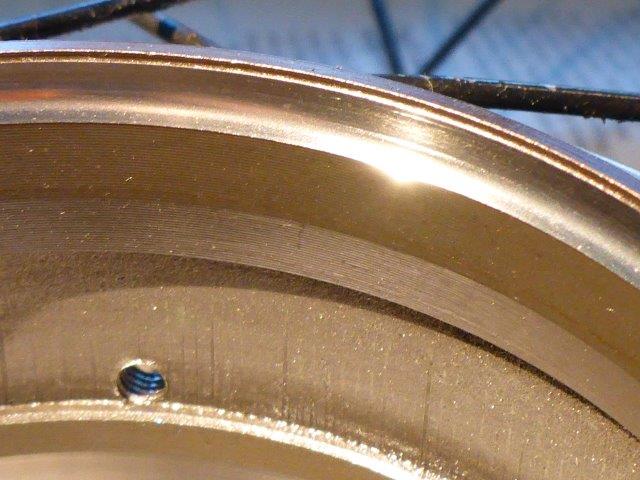
As you'd expect with the bearings in that condition, the mechanism of the innards looks good too.
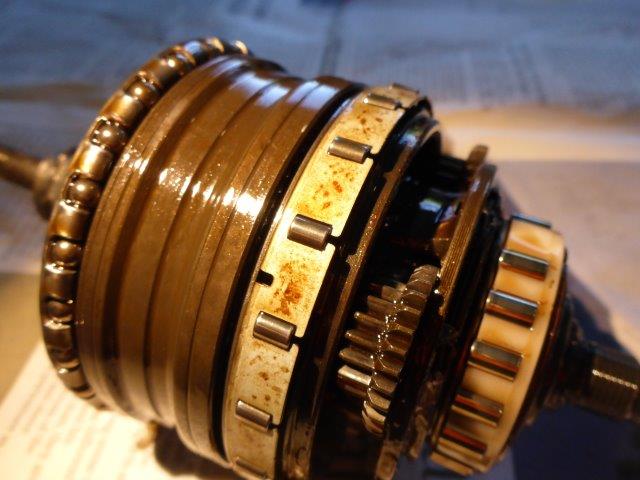
The cage to those rollers (which are actually a clutch mechanism doing the job of a ratchet) has some surface corrosion (at least, it's rust coloured), but no pitting.
The teeth on all gears look fine. No sign of corrosion or damage on anything visible.
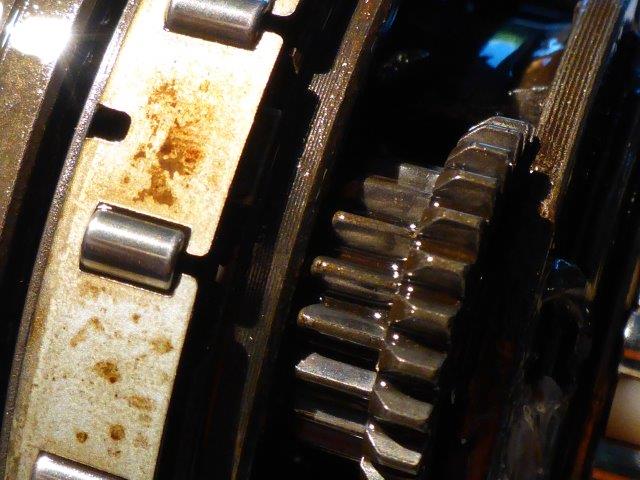
This picture hints at the one problem I did find, however.
There's a lot of play in all sorts of bits now. In this picture, you can see that the carrier (the large brown-coloured metal bit just to the left of the largest cage of bearings) is not parallel to the roller cage alongside it. In fact, there's a lot of play in everything - the carrier moves around next to the roller cage, the gears to the left of that are loose and there's slop in their mountings. There is lots of play in quite a lot of bits that didn't used to have such movement.
So nothing is corroded (much), but it's all really quite worn and loose.
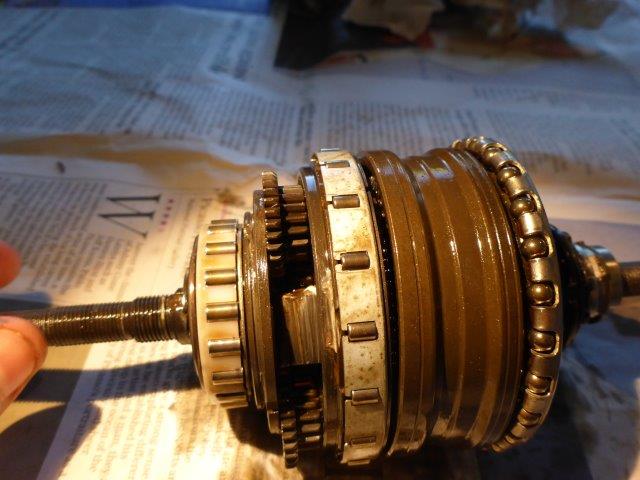
Conclusions
It's good that the hub is still functional, and it's good there's no corrosion. Eight years and 22,000 miles is pretty good going, I think (especially given the intermittent nature of any care it has received).
I can't say it's good-as-new, however. It has been making some ominous grumbling noises, and it's quite sensitive to the adjustment of the shift cable. I suspect that's because the innard do move around due to wear - maybe any tolerance in where the cable needs to be is used up by the innards not being always in the same place relative to each other.
It's oily. The oil-port helps keep it oily, I think (I'd oil it even less often if I need to dismantle the wheel), so I think it was worth doing.
I have my doubts that this hub is going to last another eight years, however...